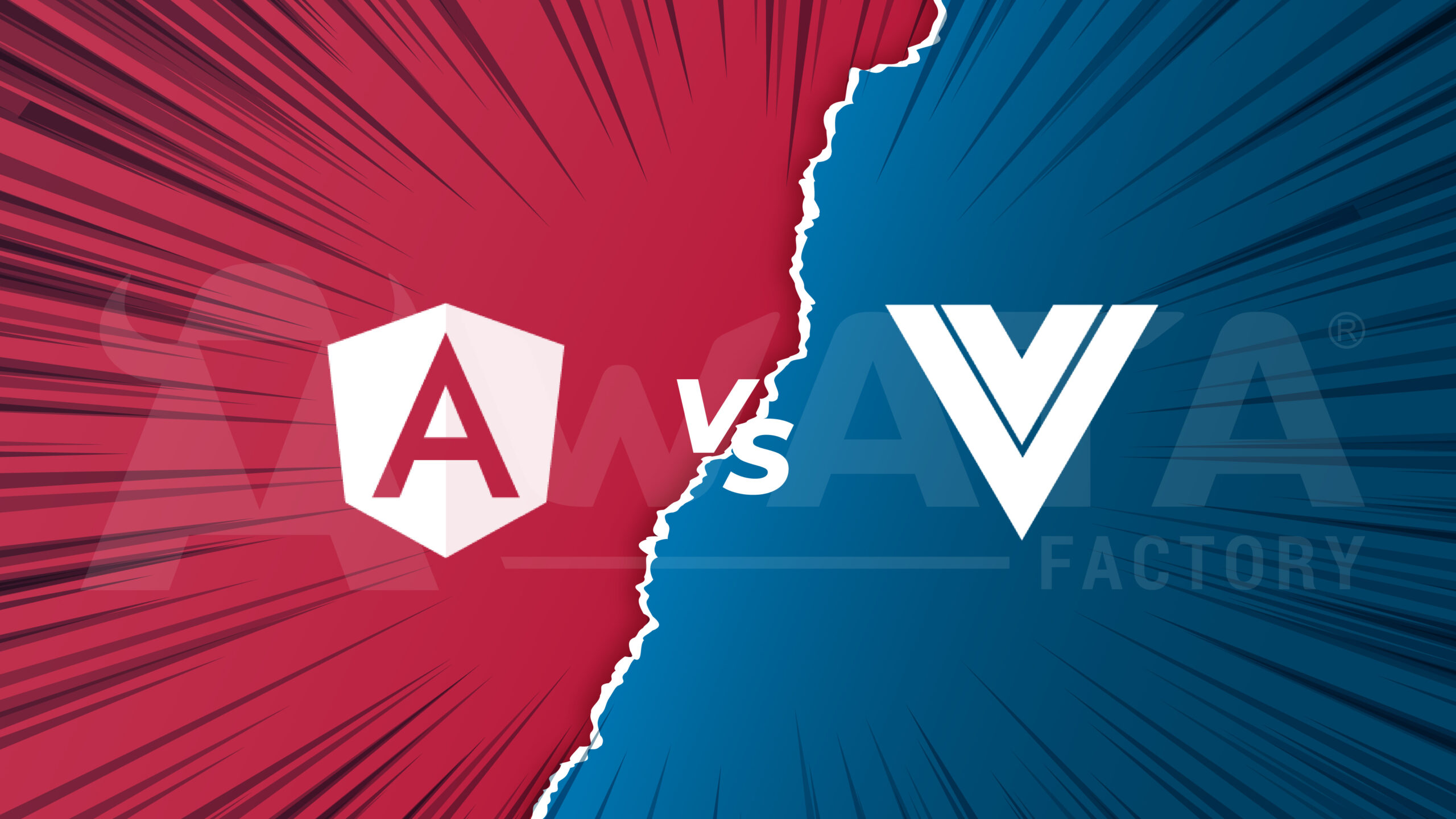In the world of web development, choosing the right framework is crucial to the success of a project. Among the most popular options are Angular and Vue.js, two frameworks that have become increasingly popular since their introduction. This article looks at the development of Angular and Vue and compares their key features, approaches and use cases.
1. History and development
Angular was developed by Google and originally released in 2010 as AngularJS. This framework revolutionised the creation of dynamic web applications and introduced concepts such as bidirectional data binding and directives. However, as AngularJS became more widespread, it reached its limits, prompting Google to completely redesign the framework. In 2016, Angular (sometimes referred to as Angular 2+ to distinguish it from AngularJS), a more modern and modular TypeScript-based framework, was released.
Vue.js, on the other hand, was developed in 2014 by Evan You, a former Google employee, as a lightweight and flexible alternative to AngularJS. Vue.js was designed to be customisable and progressive, allowing developers to gradually integrate it into projects. Since its launch, Vue has grown in popularity thanks to its simplicity and ease of use, especially for smaller applications and quick-turnaround projects.
2. Architecture and concept
Angular is a comprehensive and independent framework that follows a component-based development architecture. Thanks to TypeScript, it is strongly typed, which makes it suitable for large, complex projects where scalability and maintainability are crucial. Angular has several built-in tools such as routing, form management and a robust dependency injection system, making it a comprehensive solution for enterprise application development.
Vue, on the other hand, is more flexible and less idiosyncratic. It offers a similar component-based architecture, but with less stringent requirements than Angular. Vue focuses on simplicity and accessibility, making it easy to learn even for inexperienced developers. In addition, Vue offers more freedom in the organisation of the code and the choice of additional tools, such as the Vue Router or state management with Vuex, which are not mandatory but can be added depending on the needs of the project.
3. Performance and scalability
Angular is designed for large, complex applications. The use of TypeScript and the modular structure enable good scaling in large projects. However, the associated complexity can lead to a longer learning phase and higher initial development costs.
Vue is known for its lean performance and fast load time. Although Vue can also be scaled for large projects, it is most used in small to medium sized applications where speed of development and ease of maintenance are most important. Vue allows developers to get started quickly with minimal configuration, which can be a big advantage in prototyping or agile development projects.
4. Community and ecosystem
As a Google-supported project, Angular has a very large and active community and a rich ecosystem of tools and libraries. The documentation is comprehensive and support for enterprise solutions is strong. However, due to its more complex nature, the ecosystem can be intimidating for inexperienced developers.
Vue has quickly gained popularity, with a passionate and growing community. Although Vue doesn’t have the backing of a tech giant, its community has contributed significantly to its ecosystem, providing useful libraries and tools. Vue’s documentation is known for its clarity and accessibility, which helps it to be quickly adopted by new developers.
5. Use cases
Angular is ideal for large-scale web applications, especially those that require a robust framework and integrated tools for complex project management. It is often used in corporate environments where scalability, maintainability and consistency are prioritised. Typical examples of the use of Angular are enterprise management systems, large e-commerce applications and internal platforms of large organisations.
Vue is ideal for projects where simplicity and speed are key. It is an excellent choice for single-page applications (SPAs), interactive user interfaces and rapid prototyping. Startups and small to medium sized projects often choose Vue for its ease of use and flexibility. It is also popular for incremental integration into existing applications when interactivity needs to be added without the need for a complete rewrite.
Conclusion
The choice between Angular and Vue depends largely on the context of the project. Angular is the preferred choice for large, complex enterprise applications where scalability and enterprise support are important. Vue, on the other hand, is ideal for smaller, more agile projects where simplicity and speed of development are paramount.
Both frameworks have proven to be powerful tools in modern web development. The decision on which framework to use should be based on the specific requirements of the project, the development team and the long-term vision of the application.
At WATA Factory, the choice between Angular and Vue is not only a technical one, but also a strategic one. Both frameworks have proven to be indispensable to our portfolio of solutions, and the decision as to which one to use is based on the specific needs of the customer and the project in question. WATA Factory’s ability to use the right tool for every situation enables us to deliver quality software that meets the diverse needs of our customers.



